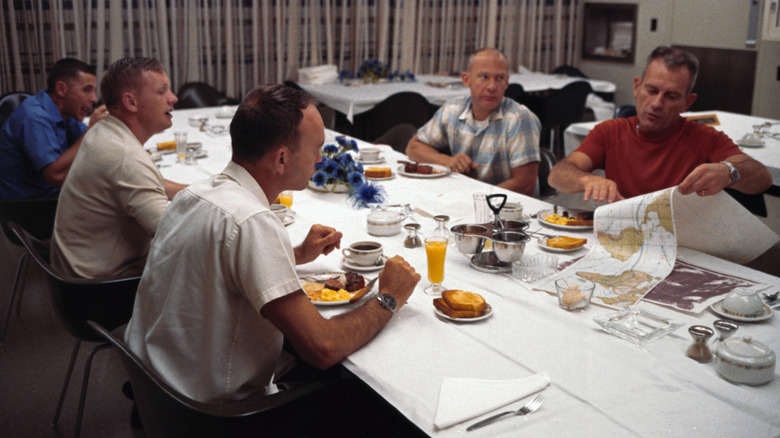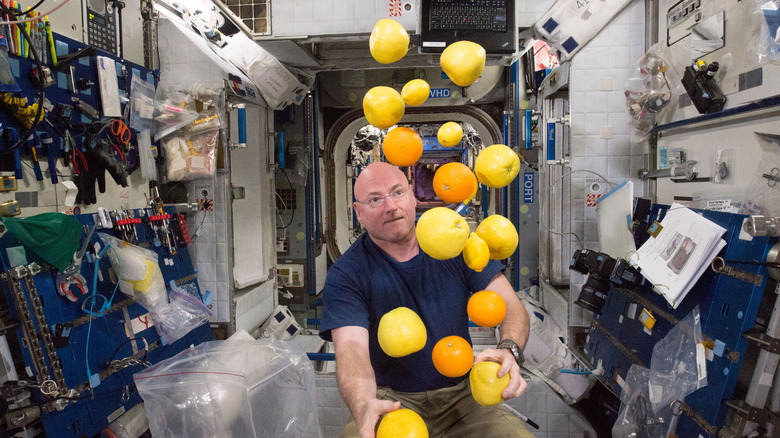The Reason Steak And Eggs Is A Go-To Dish For Astronauts Heading To Space
NASA astronauts are focused on many things on launch day, from their own preparation, to everything being a go technically, to the weather cooperating, to the excitement and anxiety of blasting into space. But one thing they don't have to think about is what they'll eat before liftoff. Steak and eggs is the standard pre-launch meal for NASA astronauts, a tradition that dates back to the dawn of American spaceflight.
The custom began with the Freedom 7 mission on May 5, 1961, when Alan Shepard became the first American in space with a 15-minute suborbital flight. Since the flight was so short, no provisions were made for going to the bathroom. So a preflight breakfast of steak and eggs was designed by the Aerospace Medical Laboratory because of its very low fiber content to reduce bowel movements. The protein-packed meal also provided energy and nutrition — and even today, skirt steak is considered the best cut to make steak and eggs because it's not too heavy. Also included were orange juice and tea instead of coffee, since the latter is a diuretic that makes you urinate more.
This preflight meal was maintained for following NASA missions, including Apollo 11, when Neil Armstrong, Buzz Aldrin, and Michael Collins had steak and eggs with orange juice, toast, and coffee — allowed by then — on July 16, 1969, before launch of the mission that made them the first men on the moon. It continued even as reducing the need to go to the bathroom became less of a factor, and has been kept as tradition and good luck superstition.
Eating in space and other NASA food rituals
As missions became longer after Alan Shepard's brief flight, NASA tackled how astronauts could eat in space. At first they ate pureed food squeezed out of tubes like toothpaste. By the Apollo missions, astronauts had freeze-dried and dehydrated food they rehydrated with water or could eat as small cubes — like bacon, the centerpiece of the first meal on the moon. Advancements continued over the decades, but part of the astronauts' diet on the International Space Station today is still dehydrated food.
The space station astronauts also have meals made before launch and treated so they can be kept at room temperature, which they heat up in a forced air convection oven. There's a hot and cool water dispenser for dehydrated food and drinks, and a small refrigerator for cooling and storing hydrated drink packs. They also have regular foods like nuts or tortillas, which they eat instead of bread because floating crumbs can get in machinery. When supplies are delivered, they get prized fresh fruit and vegetables, but they have to be eaten quickly since they can't be refrigerated — after all, the best place to store apples isn't your fruit bowl, it's the crisper drawer.
NASA has a few other food traditions. After a successful launch, the operations crew eat beans and cornbread, which began in 1981 with the first space shuttle as one of the foods they brought to work to share. Mission teams have peanuts on hand for launch days, which started when a 1964 launch had to be scrubbed six times, and an engineer gave out peanuts before the successful seventh attempt to try to lighten the tension.


